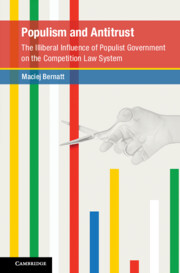Book contents
- Populism and Antitrust
- Global Competition Law and Economics Policy
- Populism and Antitrust
- Copyright page
- Dedication
- Contents
- Figures
- Tables
- Acknowledgments
- Part I Background
- 1 Introduction
- 2 Populism and Its Relationship with Democracy and the Economy
- Part II Populist Influence on Competition Law Systems
- Part III A Regional System
- Part IV Final Diagnosis and Prospects
- Bibliography
- Index
1 - Introduction
from Part I - Background
Published online by Cambridge University Press: 17 February 2022
- Populism and Antitrust
- Global Competition Law and Economics Policy
- Populism and Antitrust
- Copyright page
- Dedication
- Contents
- Figures
- Tables
- Acknowledgments
- Part I Background
- 1 Introduction
- 2 Populism and Its Relationship with Democracy and the Economy
- Part II Populist Influence on Competition Law Systems
- Part III A Regional System
- Part IV Final Diagnosis and Prospects
- Bibliography
- Index
Summary
Chapter 1 introduces the reader to the book’s topic and the existing debates which the book addresses. It also frames the book’s scope and research questions and explains the methodology and the selection of specific countries. The meaning ofthe principal concepts is explained.
Keywords
Information
- Type
- Chapter
- Information
- Populism and AntitrustThe Illiberal Influence of Populist Government on the Competition Law System, pp. 3 - 23Publisher: Cambridge University PressPrint publication year: 2022
